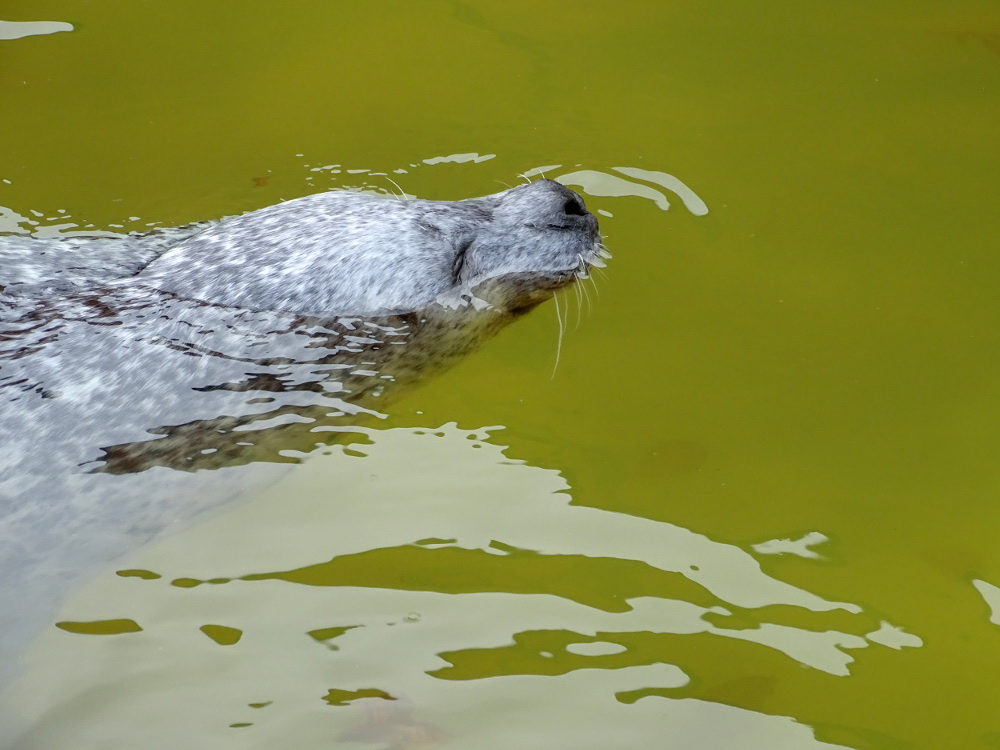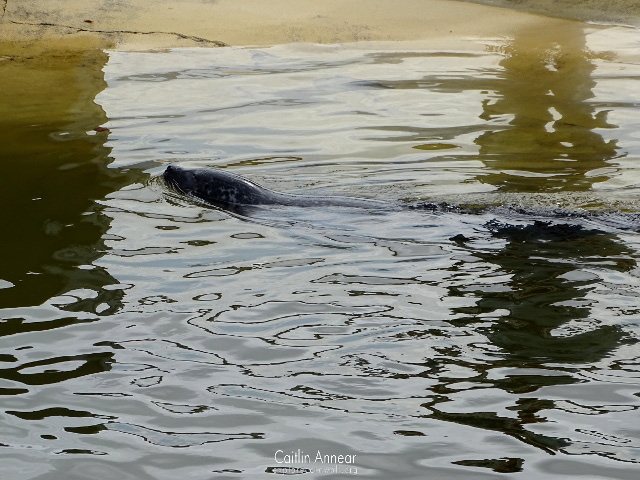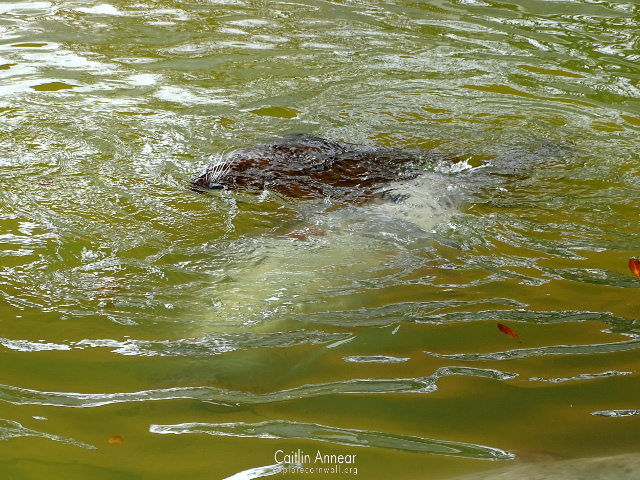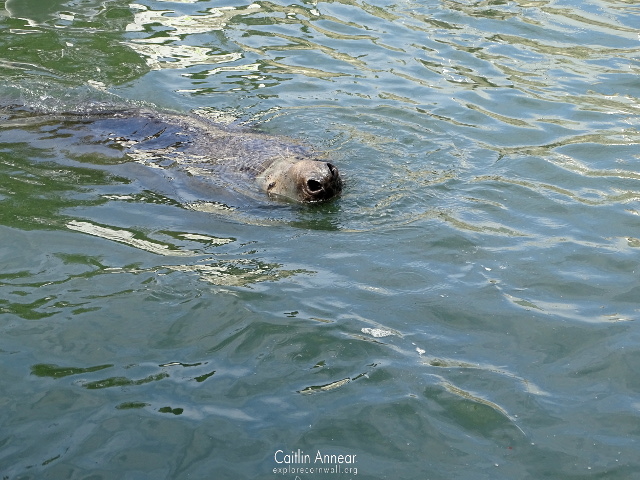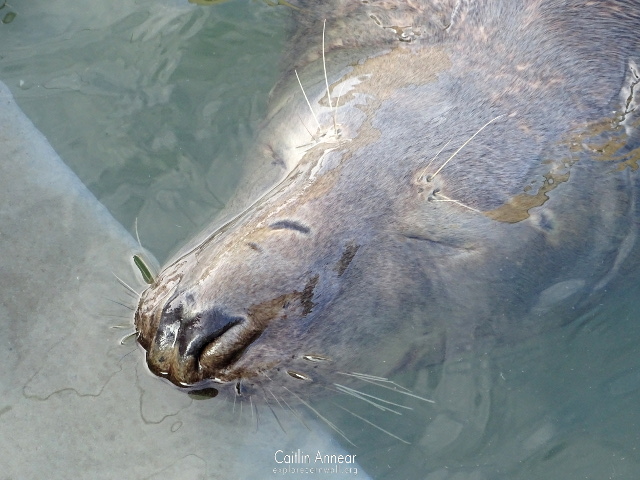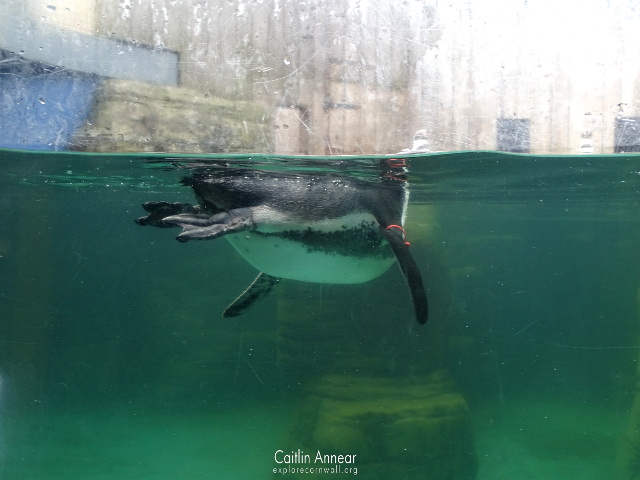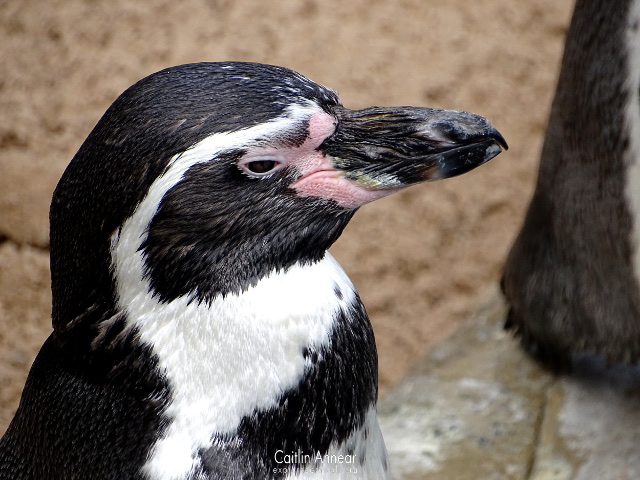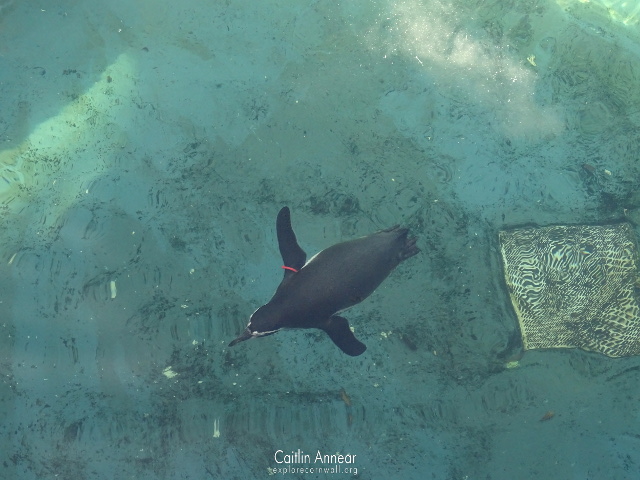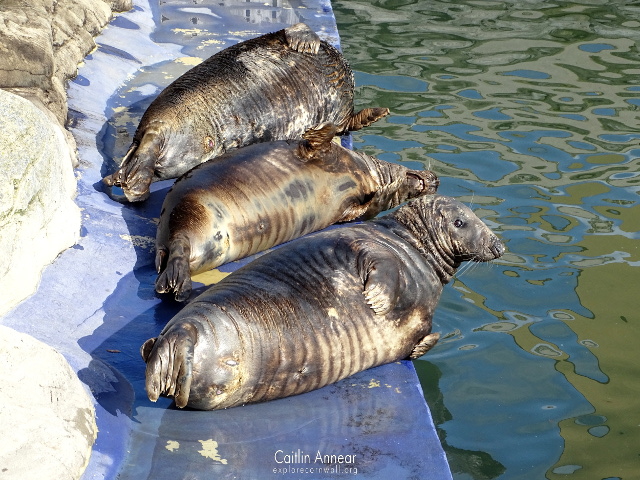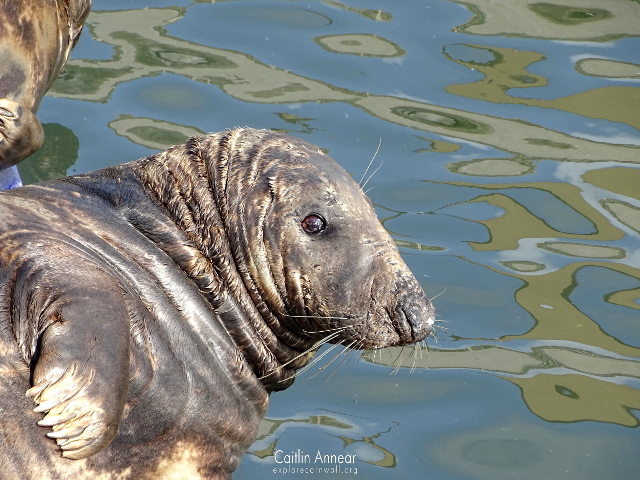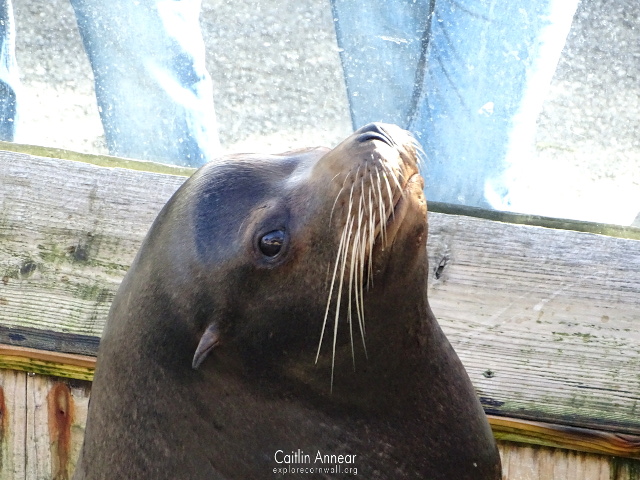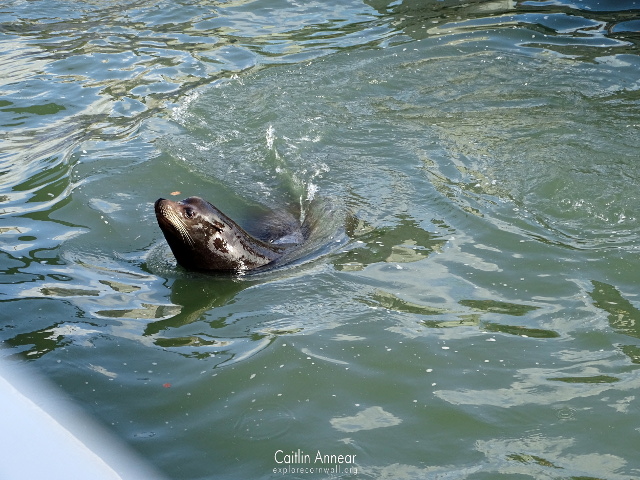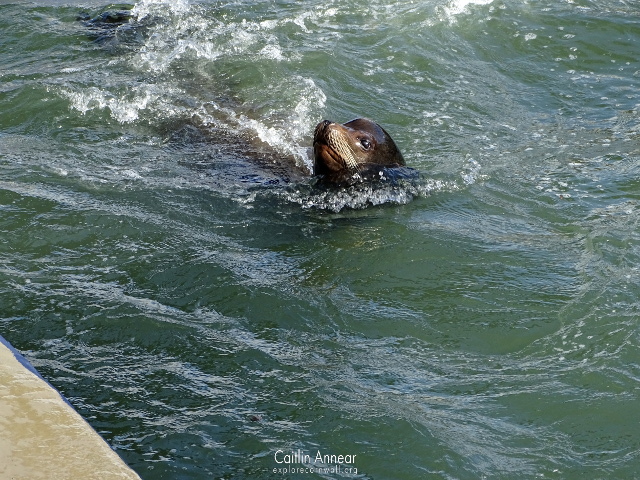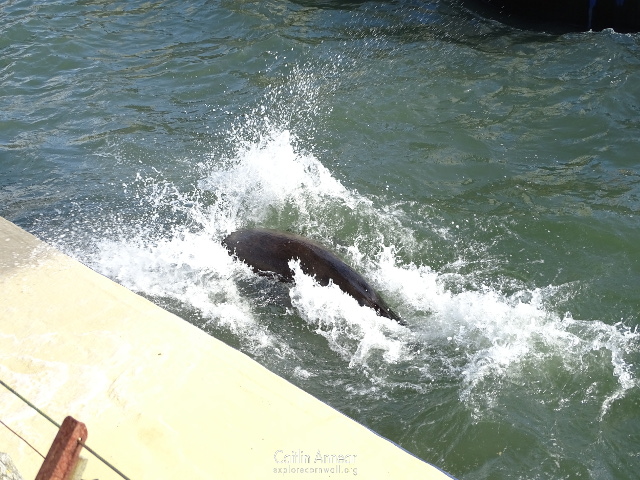A wee while ago Scottie and I headed down to Gweek to spend the day with the seals at the Cornish Seal Sanctuary. This absolute treasure is primarily a rescue and rehabilitation centre for wild seals, but also has a number of seals (and other animals) that were unable to return to the wild on their site.
Our day started off at the Common Seal pool, where a small family of live. These guys are particularly unique as Babyface, a 44 year old gentleman, is the father to two of the others seals; these babies were a big surprise to the Sanctuary as Babyface was thought to be unable to have pups and his lady friend was also on contraception.
Common Seals have one pup a year which is born with its adult coat already on. They spend most of their days out at sea, mooching around on the seafloor. They are able to dive for up to 30 minutes at a time by lowering their heart rates to between 5-15 beats per minute. These seals are the smaller of the two British species and have a smaller head than their cousins.
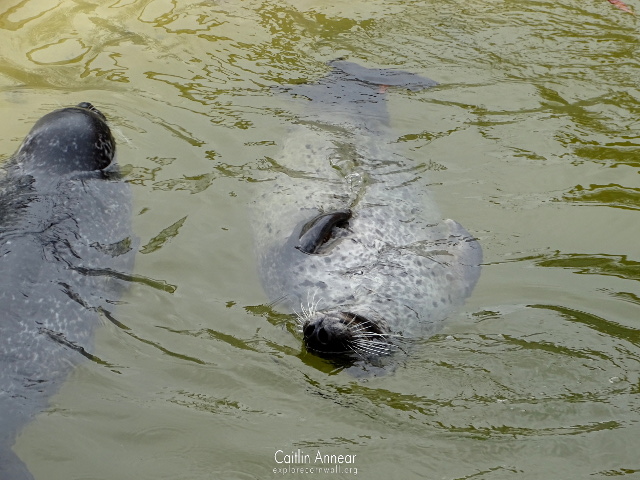
After visiting those guys, we headed to see the Grey Seals. These beauties can hold their breath for 40-45 minutes at a time, and in the wild will go off foraging for days at a time. Each Grey Seal has its own unique coat with a fur pattern that it unique to them, males are darker while females can be lighter with more mottled colouring.
This species of seal is the one you’ll see hanging out on beaches around the Cornish coast, especially between September and December when they have their pups.
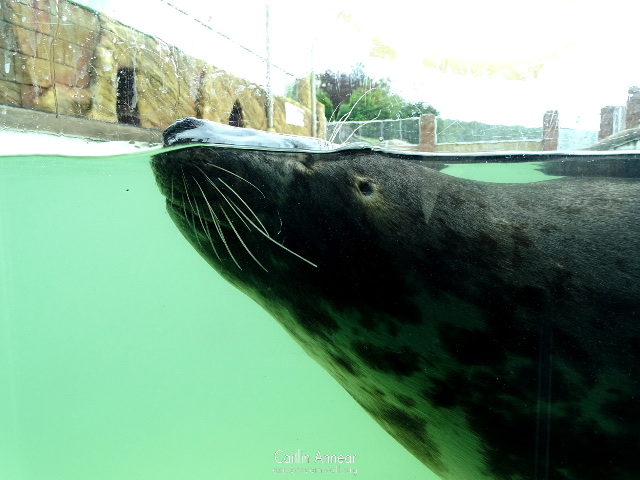
In 2010 the brand new penguin habitat was opened for the family that live their today; this new enclosure allows you to view the little monkeys from below in the water and from a higher balcony. The birds themselves are Humboldt penguins, a species normally found in South America around Chile and Peru. Along the inside corridor of the enclosure if a photo of each penguin, along with a cute little backstory and the colour of their individual armband, so that you can recognise which one is which in the pool.
In the centre of the sanctuary are two individuals from South America. The two brothers in this pool are Southern Sea Lions (Otaria byronia) called Noito and Diego that came to the sanctuary in 2009. This species of seal is commonly found along the South American coastline, particularly around Chile, Peru and Argentina.
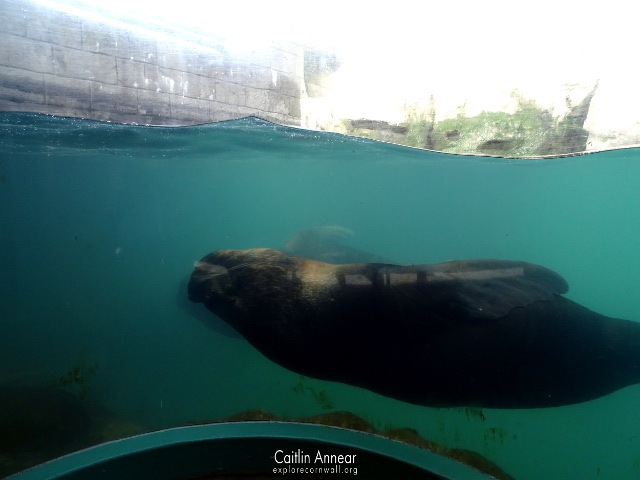
Down at the bottom of the Sanctuary are two beautiful otters. Unfortunately I wasn’t able to get any photos of these two as they were ‘canoodling’ the whole time we were there. These two are Asian Short-clawed Otters named Harris and Apricot, a species native to south-east Asia.
Also near the centre are the beautiful two California Sea Lions, Sunny and Andre. They beauties can be seen racing around their enclosure, especially at feeding time when they have to work for their meal. California Seal Lions are known to dive down to 180m and can hold their breath for twenty minutes.
The Seal Sanctuary is a great visit to see these beautiful creatures. Make sure that you stop by the scheduled feedings at each enclosure to learn more about each species and especially to see the seals churning up the water as they ‘hunt’ their lunch.
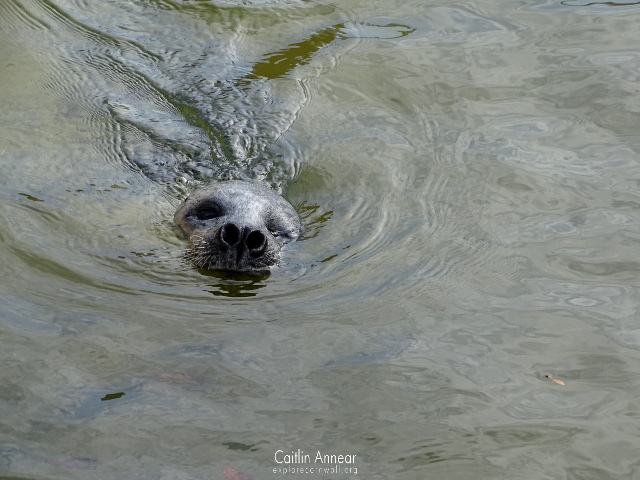
There is suitable access for everyone, and plenty of toilets and a cute little cafe selling a range of hot and cold food.
There is free parking available in the sanctuaries carpark. The area is very steep though, so make sure you’re handbrake is definitely on!
Cornish Seal Sanctuary (2020a) Asian Short-Clawed Otters. Available at: https://sealsanctuary.sealifetrust.org/en/about-the-sanctuary/asian-short-clawed-otters/ (Accessed: 15 April 2020).
Cornish Seal Sanctuary (2020a) California Sea Lions. Available at: https://sealsanctuary.sealifetrust.org/en/about-the-sanctuary/california-sea-lions/ (Accessed: 7 April 2020).
Cornish Seal Sanctuary (2020e) Humboldt Penguins. Available at: https://sealsanctuary.sealifetrust.org/en/about-the-sanctuary/humboldt-penguins/ (Accessed: 7 April 2020).
Cornish Seal Sanctuary (2020b) Common Seals. Available at: https://sealsanctuary.sealifetrust.org/en/about-the-sanctuary/common-seals/ (Accessed: 7 April 2020).
Cornish Seal Sanctuary (2020c) Grey Seals. Available at: https://sealsanctuary.sealifetrust.org/en/about-the-sanctuary/grey-seals/ (Accessed: 7 April 2020).
Cornish Seal Sanctuary (2020d) Southern Sea Lions. Available at: https://sealsanctuary.sealifetrust.org/en/about-the-sanctuary/southern-sea-lions/ (Accessed: 7 April 2020).
The Wildlife Trusts (2020a) Common seal. Available at: https://www.wildlifetrusts.org/wildlife-explorer/marine/marine-mammals-and-sea-turtles/common-seal (Accessed: 7 April 2020).
The Wildlife Trusts (2020b) Grey seal. Available at: https://www.wildlifetrusts.org/wildlife-explorer/marine/marine-mammals-and-sea-turtles/grey-seal (Accessed: 7 April 2020).
